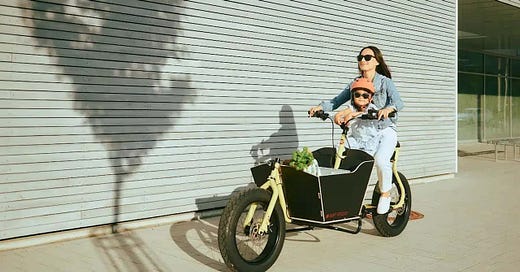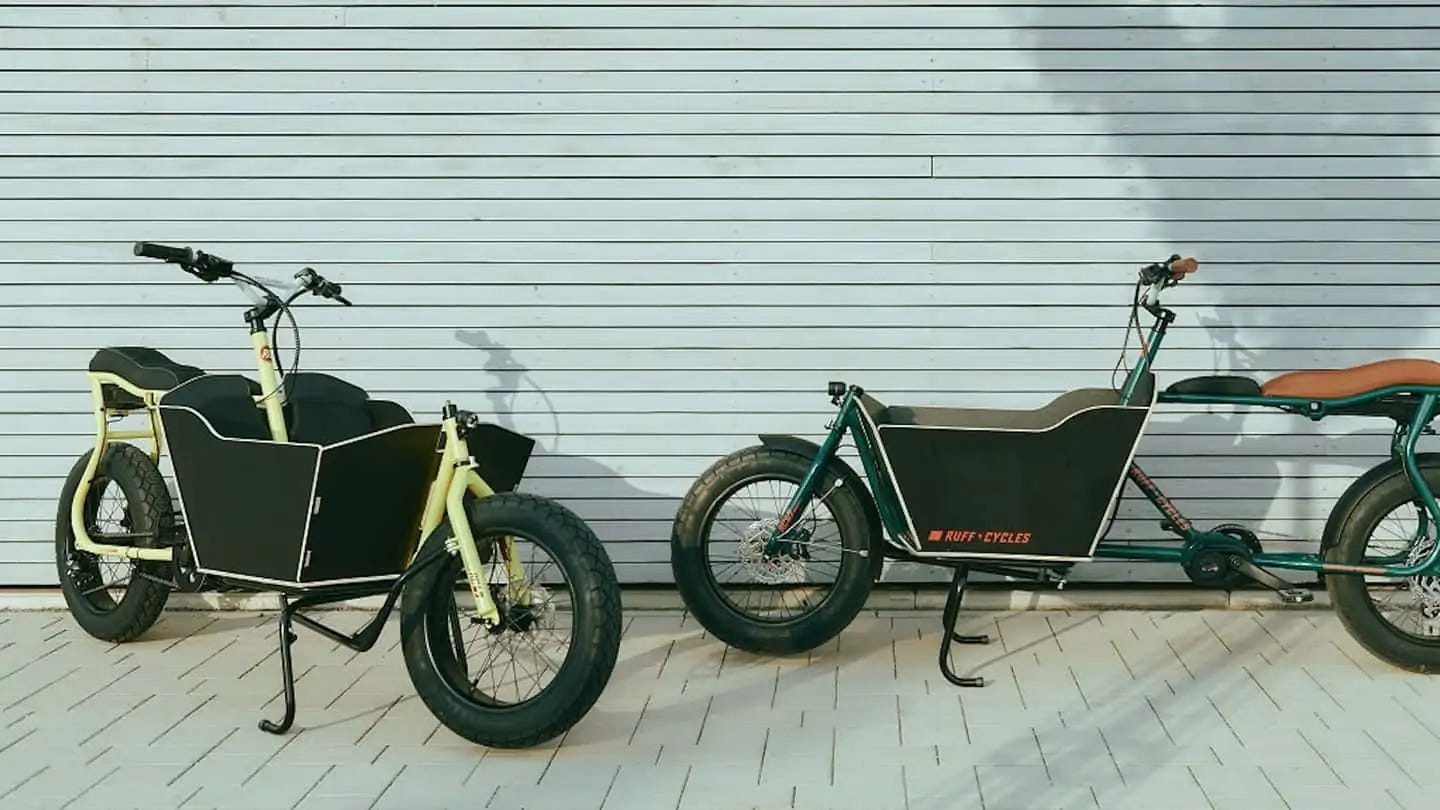Hello everyone,
Welcome to Issue #21 of Cargobike Culture!
It’s just a short newsletter this week whilst I get back up to speed after a little break. I’d like to say a public thank you to everyone who sent really lovely and supportive messages after the last issue where I talked about my struggles with mental health.
I’ve unpublished it now because I didn’t want Google to index it, and for future subscribers it’s not really relevant. But it’ll live in your 250 email inboxes for ever more as a reminder that talking publicly about mental health is important and worthy.
On with the cargobikes!
The sustainability of modern (cargo)bikes
In this months Studio D Radar newsletter, there was an article linked about the sustainability of modern bicycles. In summary, the writer suggests that since the 1980s, bicycles have become more carbon intensive to manufacture, and are harder to maintain during their life and recycle at their end.
It’s an interesting article, although as you can read in the comments, a lot of people are disagreeing with the writer’s take on the research he cites. I really don’t feel qualified to comment but there was a stat which left me open mouthed and wanting to share here;
Europe is back to producing ten million bikes annually, but the US only manufactures 60,000 bicycles per year.
The largest Chinese bike manufacturer, which builds one-fifth of the world’s bicycles, has 42 bicycle assembly lines making 55,000 bicycles a day – almost as much as the US in a year.
🤯
The article also talks about cargobikes, although I think some of the stats he cites about those are even more questionable. It reminds me of one of my favourite phrases; I think you might find it’s a little more complicated than that.
But I do agree with many of his points. Modern bikes, especially electric cargobikes are getting increasingly complicated to repair and upgrade. I’ve talked about the SUV-ification of cargobikes before, and I think this comes under the same umbrella.
Fat tires & cargobikes
I saw this new bike from German fat-bike manufacture Ruff Cycles this week (via
and the website InsideEVs).It’s an interesting take on what a cargobike can look like, and features the open frame and long saddles found on their standard fat-bike models.
I’m not sure what the physics is of having smaller and wider wheels on a cargobike? Do you? Comment below!
And finally, I enjoyed this tweet from Berliner Heinrich Strößenreuther where he captured what the inside of a Cargoroo employee’s battery swapping cargobike looks like.
That’s a cargobike you wouldn’t want to loose track of. I’m guessing there’s around €15,000 of batteries in it.
And this beautiful photo is our own weekly shop I did today in our bakfiets.
About 60kg of groceries, sans car. 👏
In the latest issue of French language cargobike newsletter
, this amazing mobile-cinema bakfiets blew me away. How awesome is this?!It was posted on the Bakfiets Owners Club’s Facebook group, which I also didn’t know what a thing, but the page is full of cargobike goodness.









Upcycled denim bag, loo rolls and poppadoms on a cargo bike, what's not to like! And thanks for the link to Très Gros Vélo.
Hope your break has helped, wishing you well.
"I’m not sure what the physics is of having smaller and wider wheels on a cargobike? Do you? " Everyone seems to be doing this and it makes sense; lower centre of gravity (much appreciated with cargo) more comfortable ride, greater maneuverability, better on streetcar tracks etc. It is all wonderful until your battery runs out- there is a lot more rolling resistance. But it is the natural evolution of e-bike design; they started as "a bike with a boost" and have evolved into a different electric-powered vehicle.